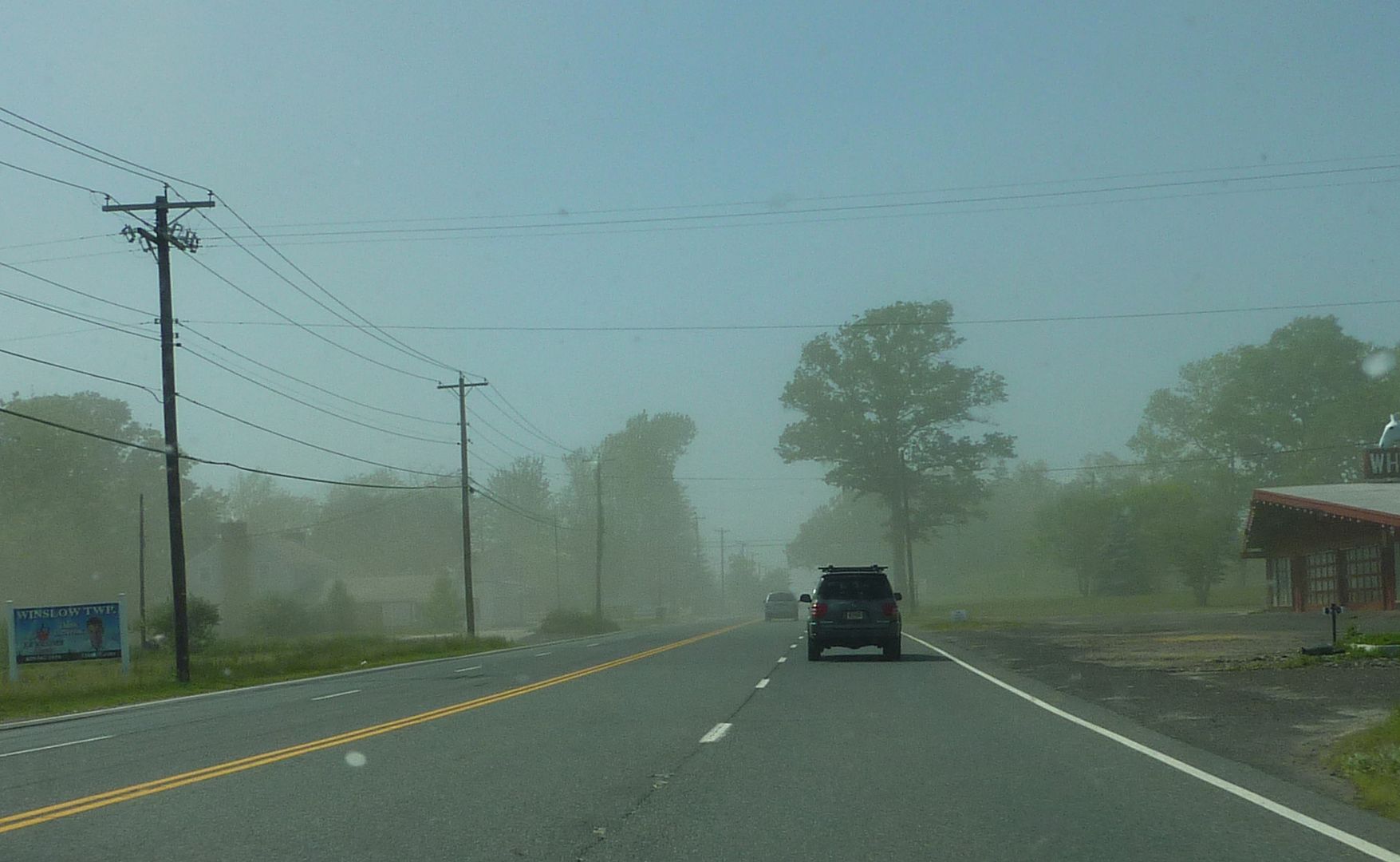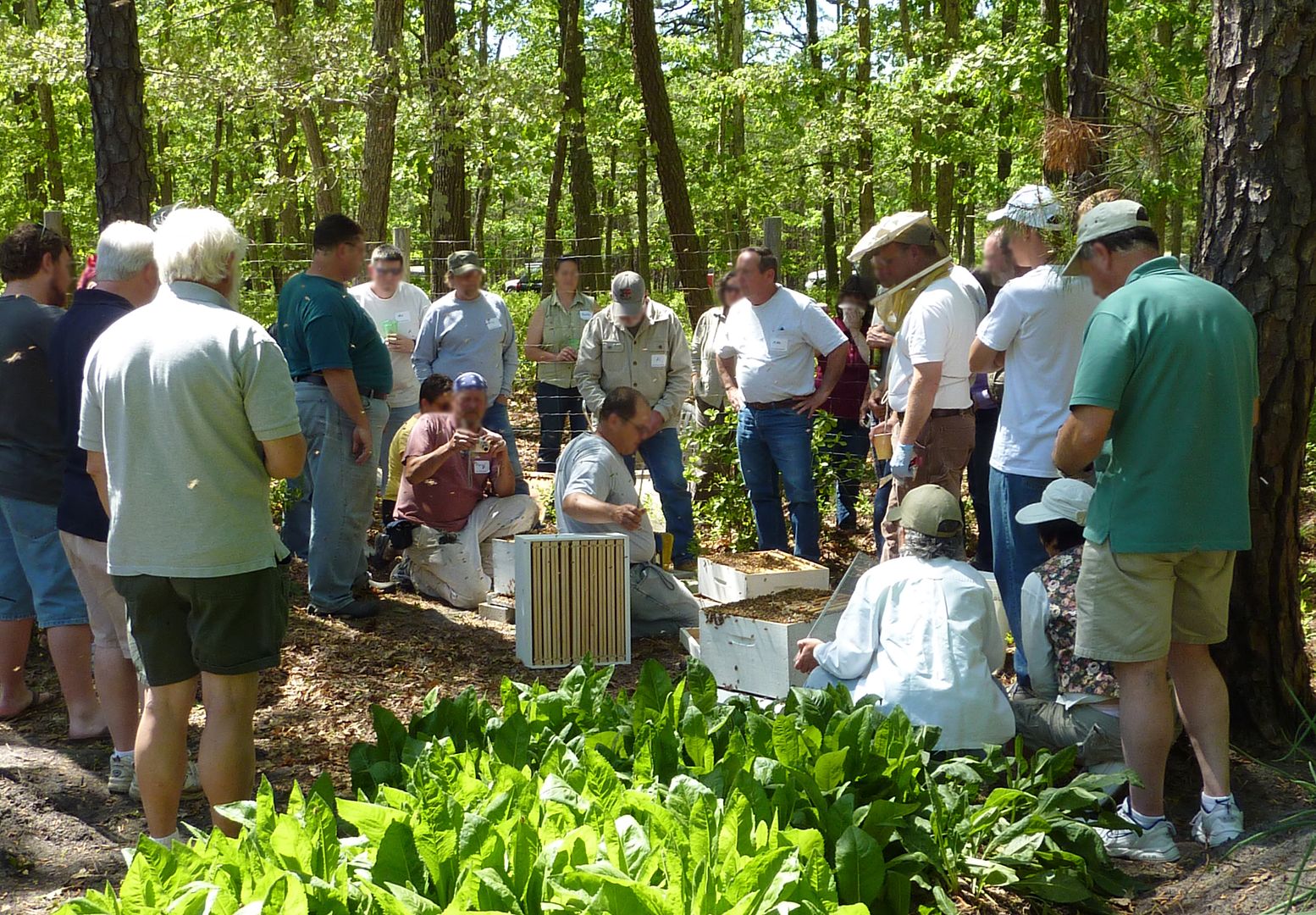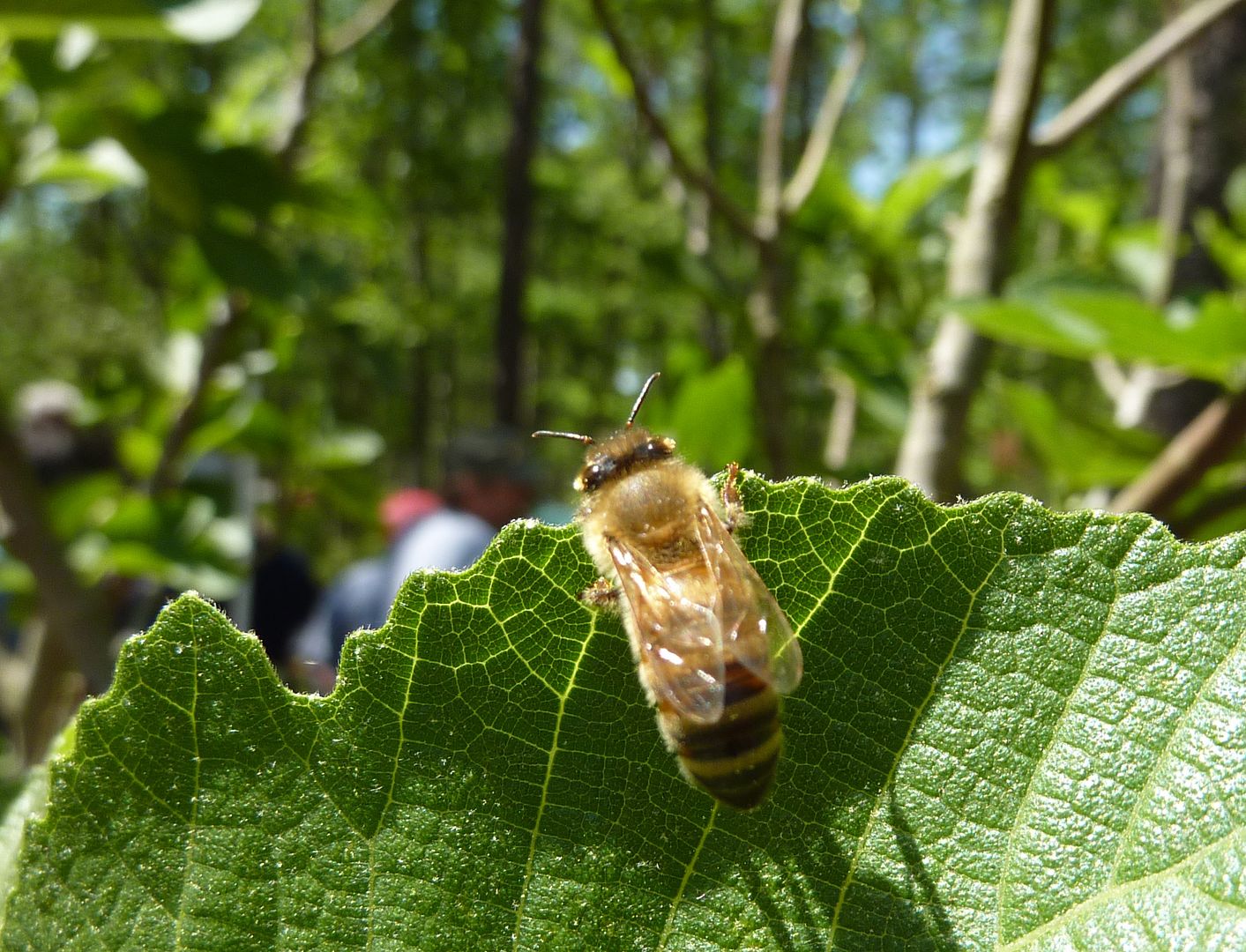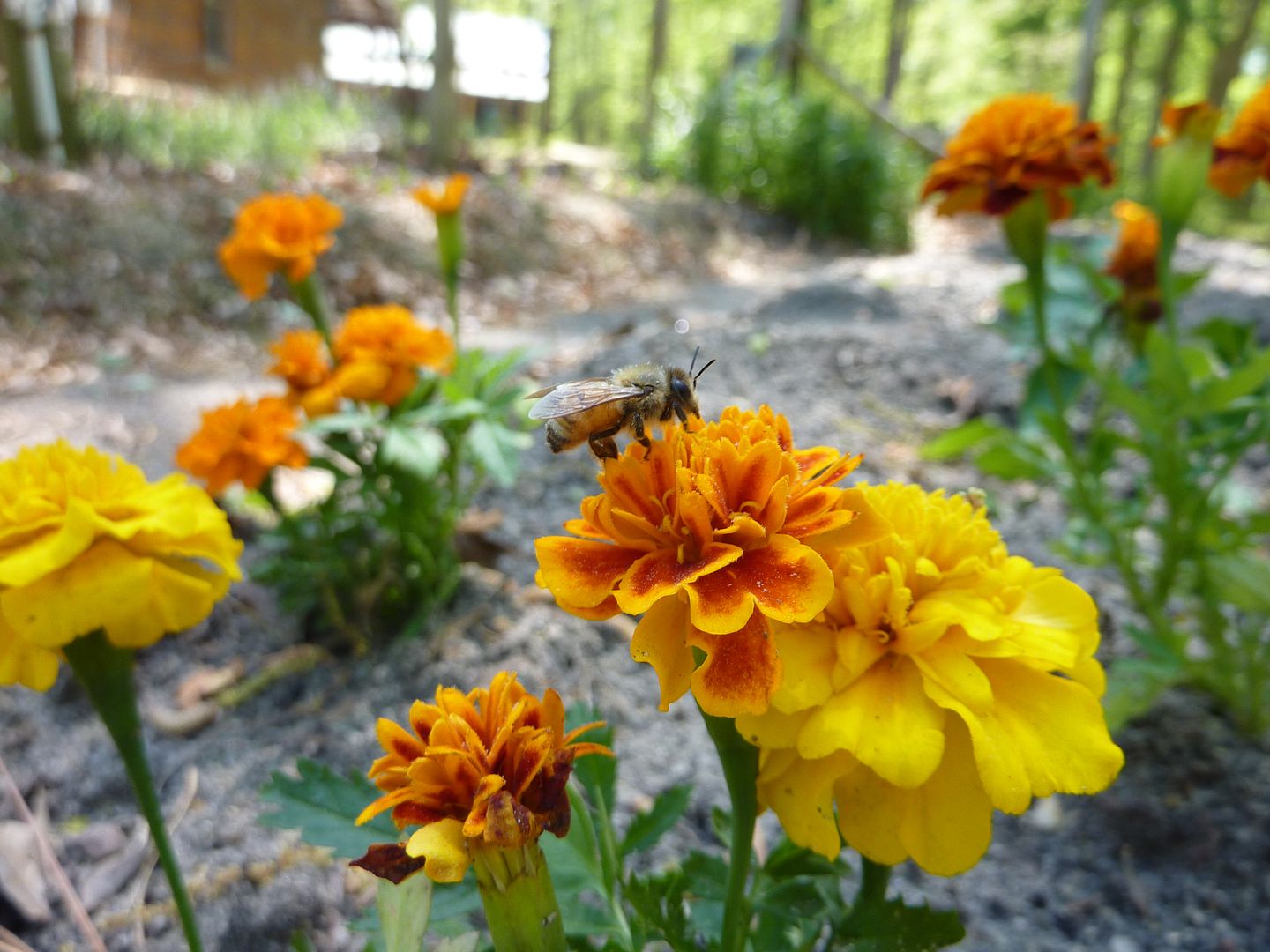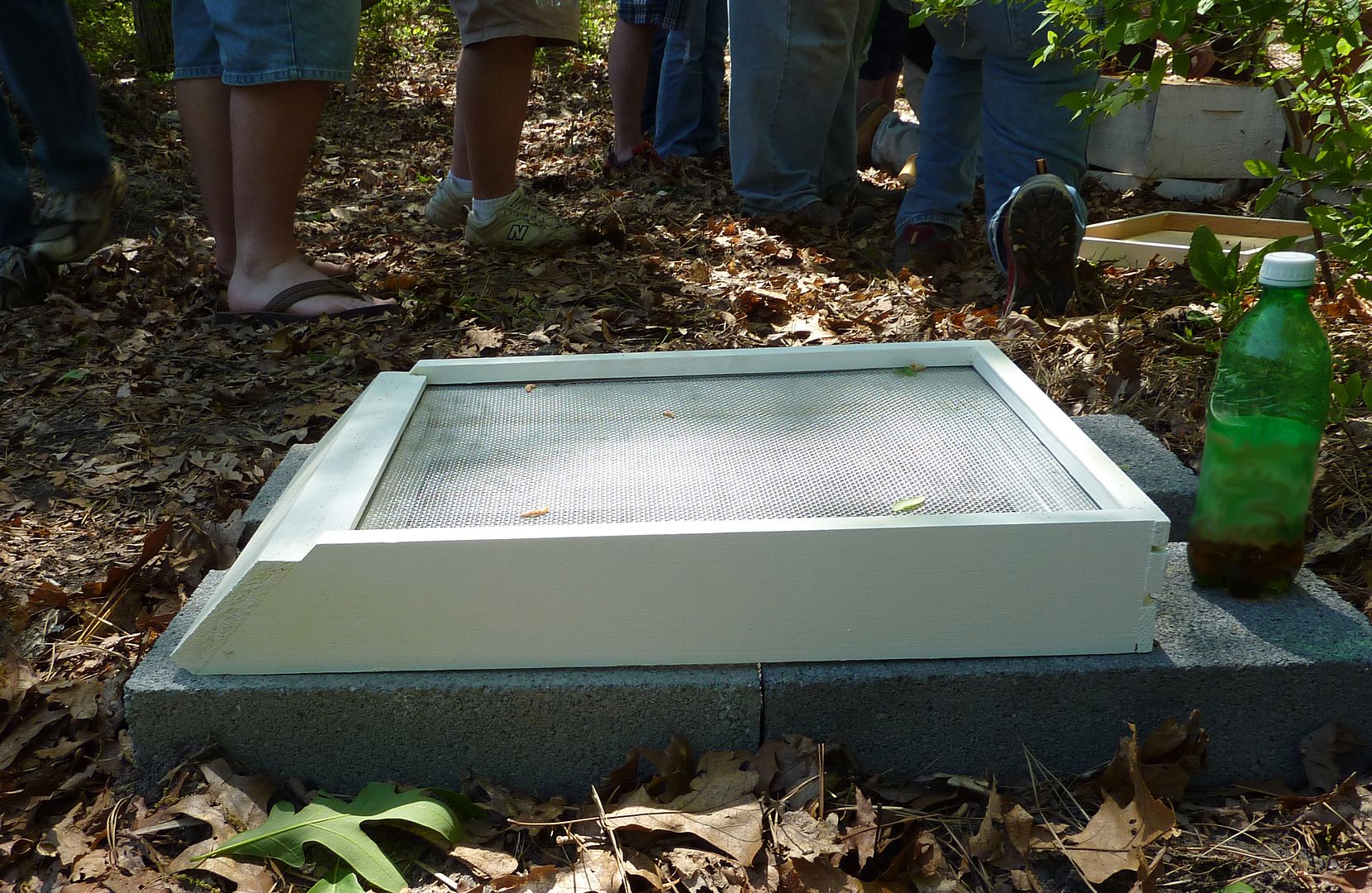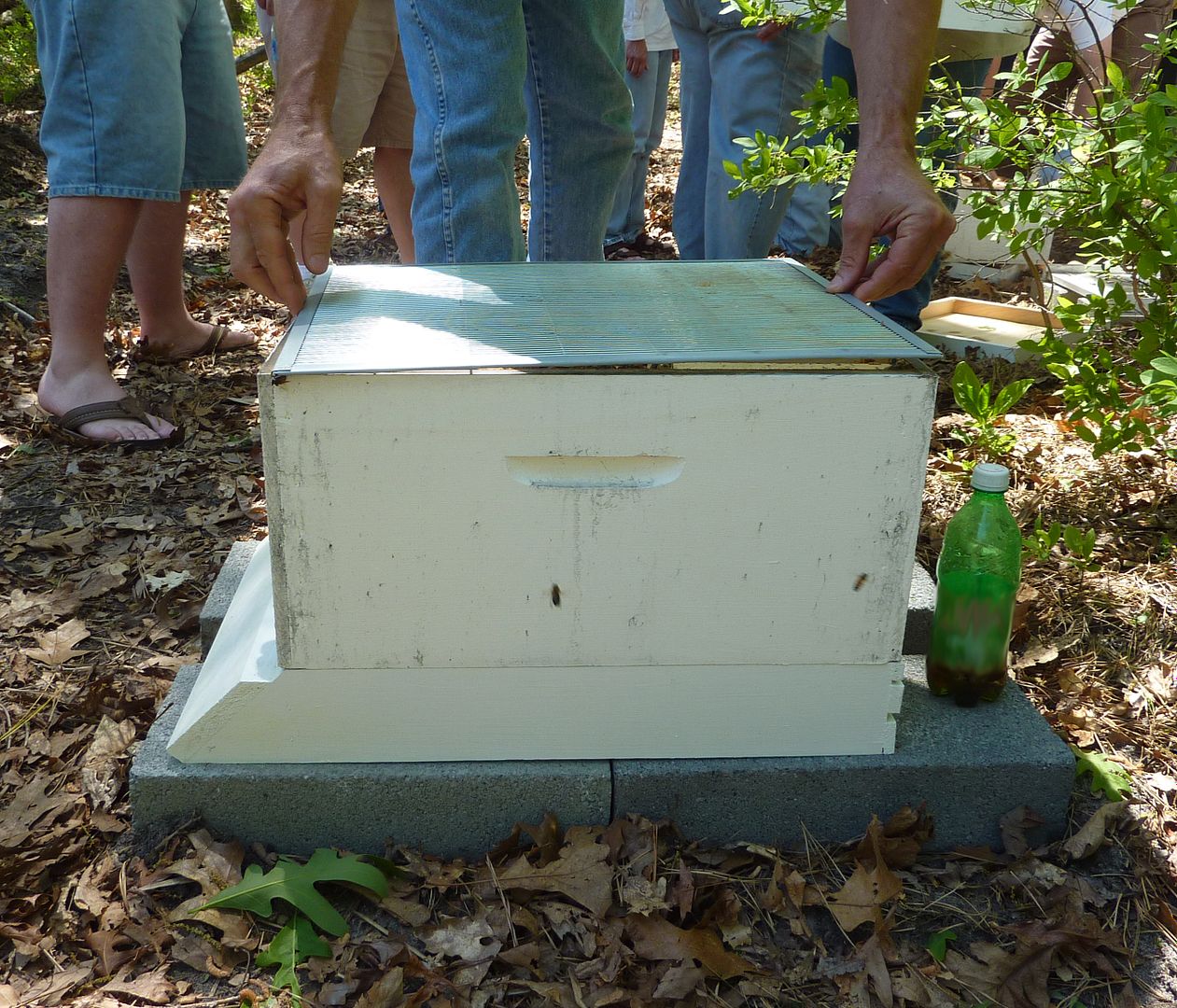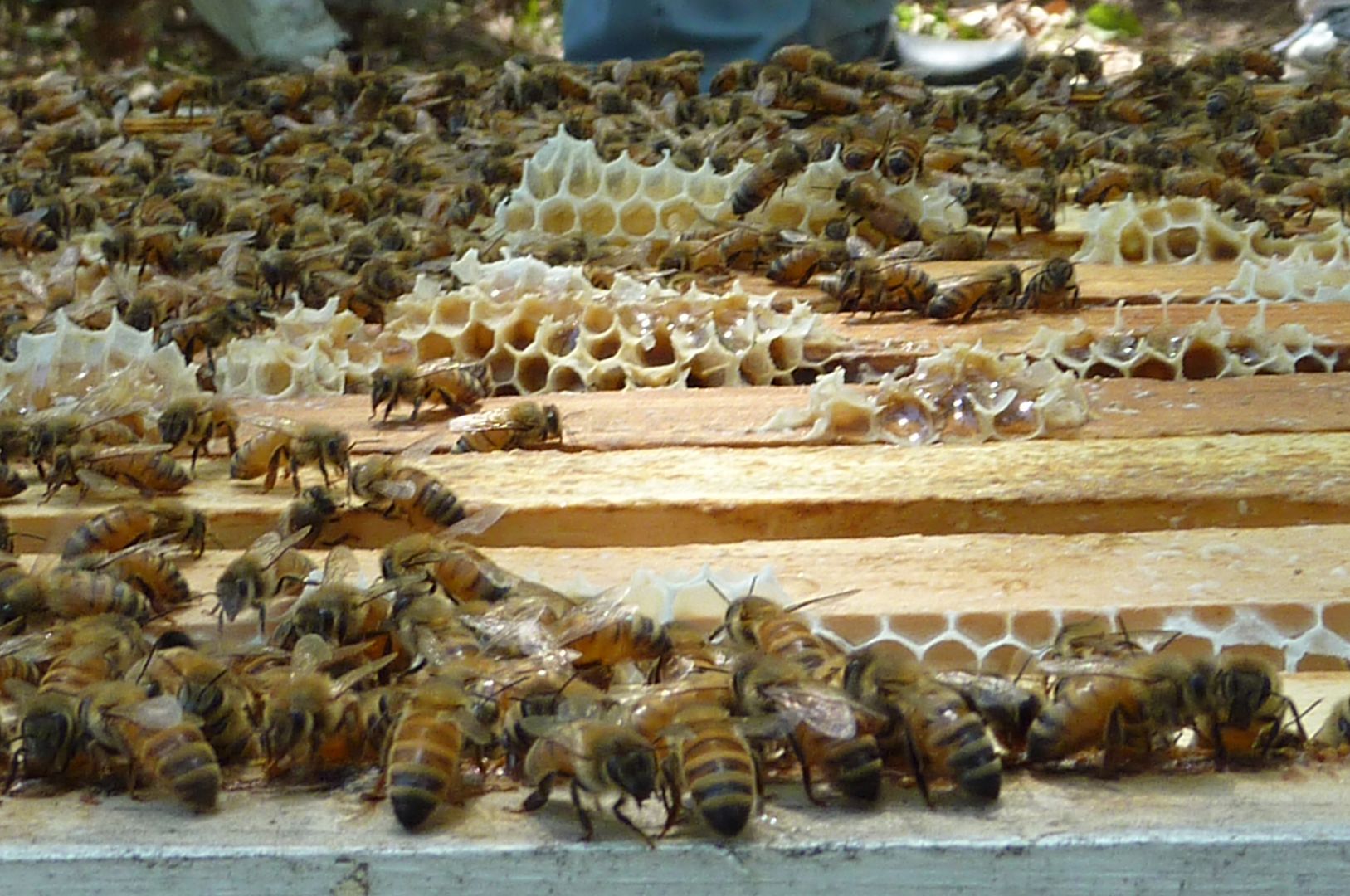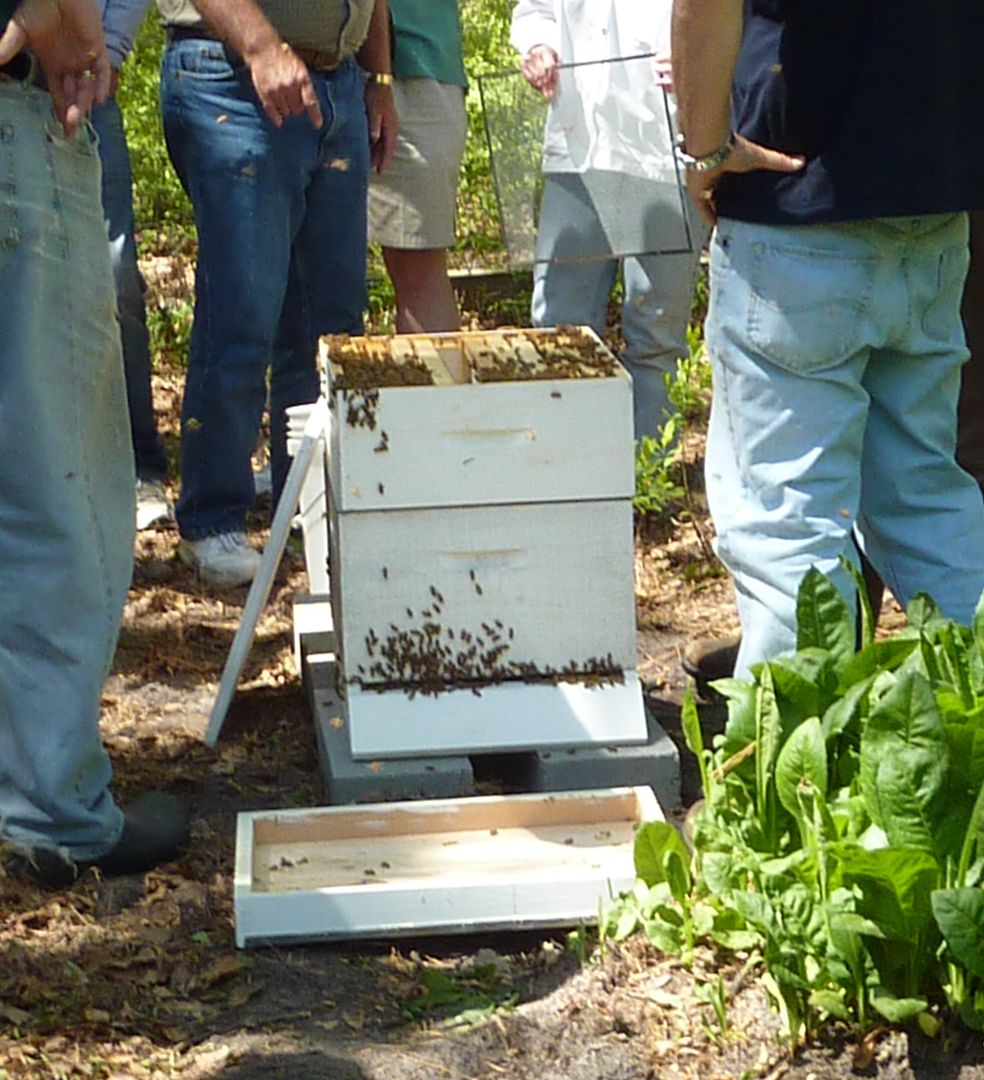Earlier this weekend I attended a beekeepers meeting out in the New Jersey Pine Barrens. There was an awful wind storm that's still going on now, two days later. That day though was the worst by far. I was watching trees bend 45 degrees as clouds of dust, leaves, pollen and such fly with the wind. Certainly not the best day to open a bee hive. I was having particularly bad allergies on the day so I didn't get very close. Don't want to sneeze on the bees much.
Disclaimer: As I said I was suffering allergies on the day this was done. To combat that I had to spend brief periods in the house and out of the pollen storm. So the information provided here might not be 100% accurate. I have done splits with my own hives though and I feel that this is one of those things everyone has their own way of doing. It is a simple idea of taking some frames out of one hive and putting them in the other with some workers. It's best if The Queen go to the new location with a good portion of the hive and swarm cells be left in the old location or in a nearby split. That said, here is my take on the events of that day.
As with all our meetings almost no one is waring protective clothing even while multiple hives are open and the bees are flying around us. Smokes calms them down but the heavy winds dull the effect. A few people did get stung but this is strangely uncommon with our meetings.
This meeting in particular focused on splitting a hive. At this time of year the bees are planning to swarm. This is the natural process of the hive dividing to start a new hive.
What happens is the workers build Queen Cells, as shown in this video. From these will hatch The Queen's successor. The Queen gets along with all her daughters but sister queens will fight and duke it out. The Queen (the mother of the entire hive) will fly off with the "Swarm" which is comprised of as much as 60% of the workers.
The new queen takes over the old hive and her mother's legacy. She mates usually within 5 days of taking over, weather permitting. Her flying away from the nest is no big event. She is a bee like any other, has her own wings, has a stinger to defend herself, and the workers don't really care as long as someone's laying eggs. The males absolutely adore her though and will fly after her in droves from miles around. The average queen bee mates with 8 to 16 males before returning to work. (Usually 5 years later she runs out of sperm and can produce nothing but males, and should be replaced immediately.)
(Again though all this is "how it's supposed to happen" weather permitting. Issues like the hive swarming multiple times, two queens leaving with the same swarm, the new queen didn't have a nice day of weather all week so she couldn't mate all happen more often than one would expect.)
So we open a hive to locate "Swarm Cells" a.k.a. Queen Cells. A good hive can have as many as 50 or more developing queens. You can't split a good hive that many times but doing it 1 or 2 times is fine though. Anything more and you won't get much out of it unless they all survive a few years.
Dividing a hive so there are 25 queen cells in each half is also crazy. Feel free to rip a few out or save the queens in a Nuc (tiny hive) or "Queen Castle" (special box that holds 4 hives), The idea being either to chuck em or save em. But you want at least 1 queen cell in each box, keeping the number below 10 give or take is what you want. Or just let them duke it out. The more queen cells though and the more likely they are to swarm multiple times. New Queens take to much competition as the hive is still to big and this causes another swarm. This can continue upwards of 5 times from a single hive which like watch your money fly away, and should be stopped with good beekeeping. Otherwise you'll be supporting the feral bee population of your area.
While looking through frames for sighs of The Queen try and keep track of how many queen cells there are on each frame. Get rid of as many queen cells as needed but remember to keep a few. The queen cells need to stay in the old location. Try and get The Queen and her half of the hive to the new location.
Sort of knowing where The Queen is, matters because the half of the hive that still has The Queen might still try and swarm if new queen cells start hatching. I say "Sort Of" because finding a queen bee is hard to do, even among beekeepers. Finding eggs in cells is a good indicator of where she is though. Knowing where she isn't can be just as good.
While looking through frames we created loads of traffic at the entrance.
Many of the foraging bees sat back and watched, unsure of what's going on. Probably confused why there wasn't any alarm pheromone in the air too.
This poor bee decided to wait it out on a marigold. Easily the only time I've ever seen a bee on this kind of marigold.
The location of the new hive should be prepared and read before splitting.
The box or group of frames believed to have The Queen on them should go to the new location. Both hives should have a frame or two of empty cells, uncapped larvae, and capped pupae cells, and 1 or 2 of honey as well. Bare in mind that swarming queens have usually stopped laying eggs for a day or two, and this is enough to have disrupted the life cycle of the Varroa Mite population. Swarming is very healthy for a hive to do.
A queen excluder is optional. Beekeepers use this to make sure the eggs are only laid below this point in the hive.
A Honey Super (usually a smaller box) is placed on top of that, and boxes are added as they become 80% filled. If you don't give the bees enough room they'll likely try and swarm again.
With all this drastic rearrangement of the hive it's usually a good idea to do some regular maintenance. As you saw in the queen cell video they don't always build their nest inside the frame. "Bur Comb" as it is called should be removed. This is the comb that is built between boxes, usually connecting to the frame above it.
Bur comb storing honey can give you an early taste of what's to come. Careful you don't get a mouth full of brood though.
Now that all is said and done, there's nothing to do but close up the hive and let everything go back to normal. They'll soon adjust to having their new queen or new location.
The new hive up front with the old hive in the back. Both have a good population and because they don't have to swarm we've saved them the trouble of building all new comb. And that means more stored honey.
